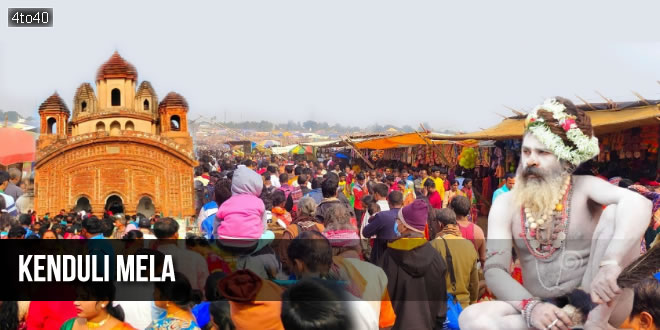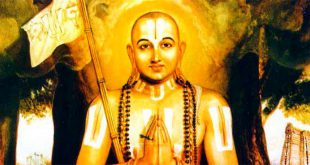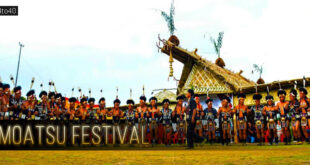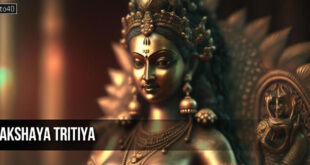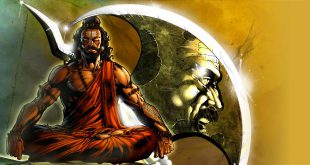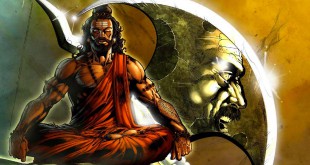Kenduli Mela: There are many small and large festivals taking place in West Bengal, India throughout the year. Kenduli Mela or Kenduli Fair is one such festival which provides an opportunity to encounter the Bauls. The Bauls are a group of mystic minstrels from Bengal who travel throughout the land singing songs and playing music that transcend all religions and scriptures.
The Mela begins on the last day of the Bengali calendar month Paush and continues to the second of the month of Magh. It is held on the occasion of Makar Sankranti, every year in the Birbhum district in West Bengal popularly known as Lal Mati-r Desh owing to the red soil found here.
The three-day fair receives its name from the famous poet Jaydev Kenduli and is held about 42 km from Shantiniketan (Rabindranath Tagore‘s adobe of peace) on the banks of the River Ajay which is the birthplace of the poet. It is also called Baul Mela or Jaydev Mela. The start of the fair commemorates the auspicious day on which the great poet Jaydev is claimed to have taken a bath at the Kadaambokhandi Ghat of the River Ajay.
Festivities @ Kenduli Mela
The Kenduli Mela provides a unique opportunity to catch a glimpse of the wandering minstrels called Bauls, who believe in the simplicity of love of life and who propagate universal love that transcends religion. Thousands of people from all over the country and overseas flock to this three-day musical event which celebrates soulful music and is an opportunity to meet the Bauls in their saffron attire carrying a musical instrument called the Ektara.
Presently, the Mela centres on the Radhavinod temple established by Queen of Bardhaman in 1683. The temple is the life center of the fair.
Colorful sellers and their colorful wares shore on either side of the roads. These stalls which display an impressive variety of local handicrafts are a major attraction. In the evening the Mela is brightly lit up by electric lights. Circus walls also offer their share of fun in the Mela. There is also a giant merry-go-round.
A taste of the local cuisine at the fair is a must for the visitors. Everything from cooking utensils to fishing nets is sold in the fair.
Events @ Kenduli Mela
The program of the Mela is as follows:
- Previous Day: A day prior to the festival, there is Agaman or a welcome to Bauls, Kirtanias, Sadhu-Sanyasis to the village Jayadev Kenduli.
- Day 1: This is the day of Makar Sankranti or Poush Sankranti. There is a holy bath in the River Ajay followed by the commencement of the Mela. The Bauls and the Kirtanias sing in Akhras.
- Day 2: The singing and playing the Ektara instruments continues in the respective Akhras.
- Day 3: On this day, the fair goes on as usual and there is a Nagar Parikrama. Bauls visit each other s akhras.
- Day 4: This day is called Dhulat. It is the breaking of the Mela, dhulat means dust, and the Bauls believe that everything ultimately reduces to dust. This day is celebrated with abir khela or throwing or smearing of colourful dust called abir, kolakuli or embracing one another as in Vijay Dashmi of Durga Puja and vidaya or parting.
The Mela ends with tearful eyes and a solemn promise to return the following year.
The Akhras:
An akhra is a gathering of people under a common roof for religious purpose. There are many akhras in Jayadev Kenduli and the people also set up pandala with a stage filled with lights and sound system. There are about 78 fixed akhras along the banks of the River Ajay. These are permanent concrete structures constructed in the memory of their Guru.
Many akhras from outside set up their pandalas and stage. There are also modern akhras of urban Bauls with latest musical instruments and sound systems. Roughly, around 200 akhras participated in the Mela.
At the Mela, the Bauls go from akhara to akhara through the night for three consecutive days. In this way, an akhra is never in dearth of a Baul singer. Usually, a Baul sings two to three songs – more if the audience is cheering, if the Baul is a renowned singer or if the next Baul has not arrived. He is then given a small token gift of Rs. 20 and the audience also gives him token gifts in the form of currency usually going up to the stage and pinning the note to the Baul’s robe or his turban.
The Baul Music and Songs:
Birbhum is the native land of the Bauls and this festival celebrates the unique musical style of the Baul community. The term ‘Baul’ literally means one who is afflicted with the spirit of the wind or mad. The Baul songs, music and philosophy form an impressive representation of the folk culture of the district. Birbhum has also been home to other folk culture groups like Kabiyals, Kirtaniyas, etc.
The Bauls comprise a very small percentage of the Bengali population. However, their influence on the culture can be seen very emphatically. Lalan Fakir is one of the poet-practitioners who have performed at the fair in the past.
The Bauls are known to live at the 160 makeshift huts at Jayadev Kenduli for about a month and play the wonderful music and the songs inherited from Jayadeva at night.
Ektara is a one string instrument made of dried pumpkin, gourd, wood, coconut shell and it is played by plucking the string with a single finger. The Bauls believe that the ektara produces the Om sound.
Over the years, there has been a lot of hybridization of folk and urban culture. The modern urban Bauls use their elaborate sound systems and musical instruments to sing the melodious songs. The most glaring negative point of the Mela is the prominent degeneration and degradation of the spiritual tone of the Mela.
The Kirtanias:
In the recent years, this great Baul fair in the state is losing its natural character, as they are being systematically outnumbered by Kirtanias, who perform in the Mela every year. In 2008, around two thousand Kirtanias came to perform here and gained contracts worth Rs. 2 crore.
Only ten akhras are now pure Baul akhras, while some are mixed with both Baul and Kirtania songs and music. The singers alternate between the two forms singing the Kirtania songs from evening to midnight and then Baul songs from midnight to morning. However, the majority of the akhras are now dominated by the Kirtanias.
Origin and History of Kenduli Mela:
There is no established record of the origin of the fair. However, it has been known to be around for five to six centuries at the least.
Legend has it that the great poet Jayadev while composing the Gitagovinda – which celebrates Radha as a primal Shakti greater than Krishna underwent what is called a poet’s block. He went for a bath to River Ajay to relax. No sooner had he left did his wife see him come back and complete the composition. He left again and returned after several minutes saying he was now in a better position to complete the poem. The surprised wife told him that he had already done so some time back.
Having no recollection of the abrupt return, the couple soon realized that it was Lord Krishna in the guise of poet Jayadev who came and completed the verses. Thus, the Mela is organized on the day of the auspicious bath of poet Jayadev at Kadaambokhandi ghat on the occasion of Poush Sankranti or Makar Sankranti.
In 1982, the authorities of the Birbhum district took charge of the fair thereby improving the sanitation system, providing good drinking water, lighting, security and a decent ambience to listen to the soulful music.
How to Reach the Venue?
By Rail:
From Kolkata, there is a three hour train route to Bolpur station which is located in Shantiniketan. There are regular train services. However, booking is advisable for a comfortable ride.
By Road:
There is a regular bus service from Jamboni bus stand which connects Bolpur to Jaydev Kenduli. The road route takes about hours. There is also an option of travelling to Durgapur and hiring a local transport to reach Jaydev Kenduli.
Where to Stay?
There is very basic and simple accommodation available at Jaydev Kenduli. People choose to camp around the fairgrounds but the weather may rule out that option at times. Renting a room from a villager is an option. Ashram accommodation is also available but again it could be very frugal. Most people choose to lodge in at Shantiniketan and make a trip to the fair. Shantiniketan offers good accommodation facilities and is not too hard on the pocket as well.
The lovely chilly January weather combined with the soulful music and succulent delicacies make the whole experience absolutely blissful. The people of West Bengal celebrate this cultural heritage with a lot of respect and pride. The Kenduli Mela which is a celebration of the art, craft and music forms has received wide International acclaim so much so that UNESCO has included it in the list of Masterpieces of the Oral and Intangible Heritage of Humanity.
An entire piece of ancient rural India is brought alive in front of enthusiastic crowd in this three day nonstop performances. Kenduli Mela gives you an unforgettable dose of Bengali folk music.
 Kids Portal For Parents India Kids Network
Kids Portal For Parents India Kids Network
